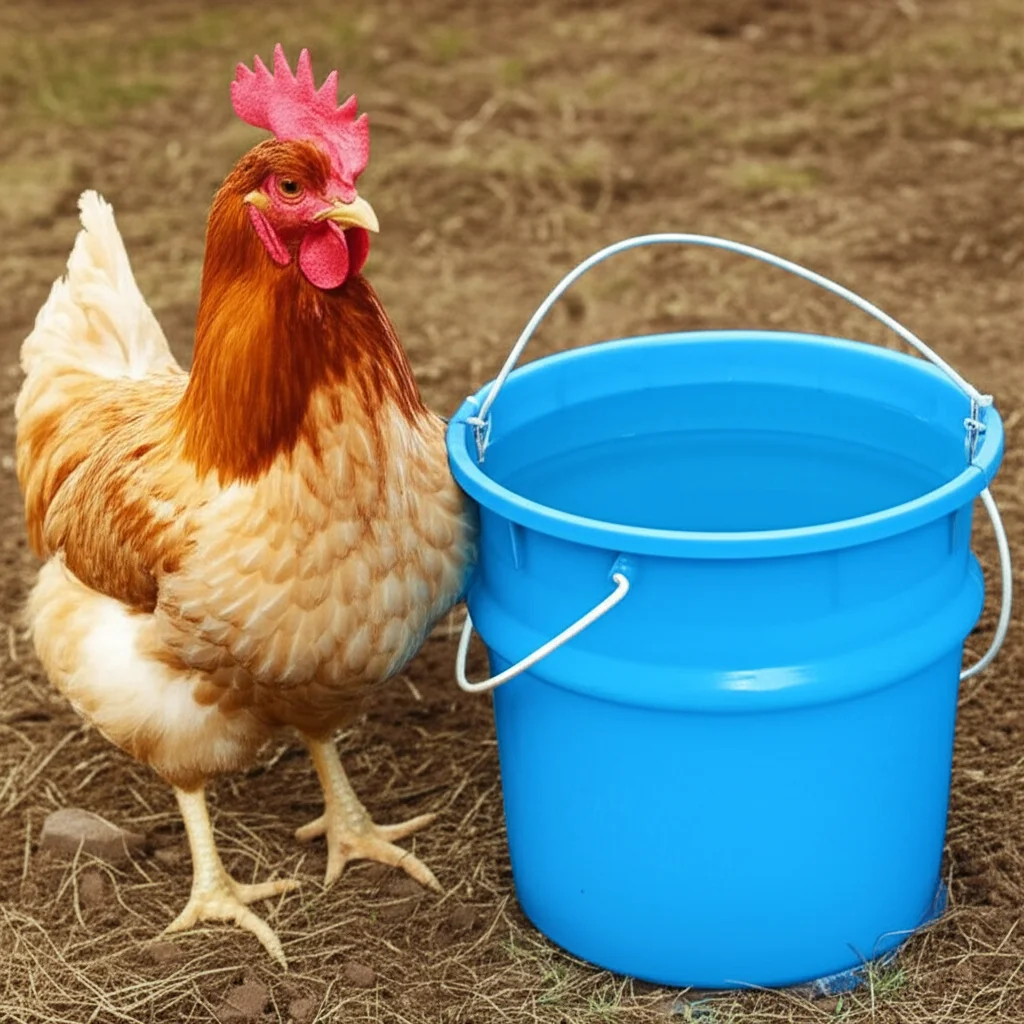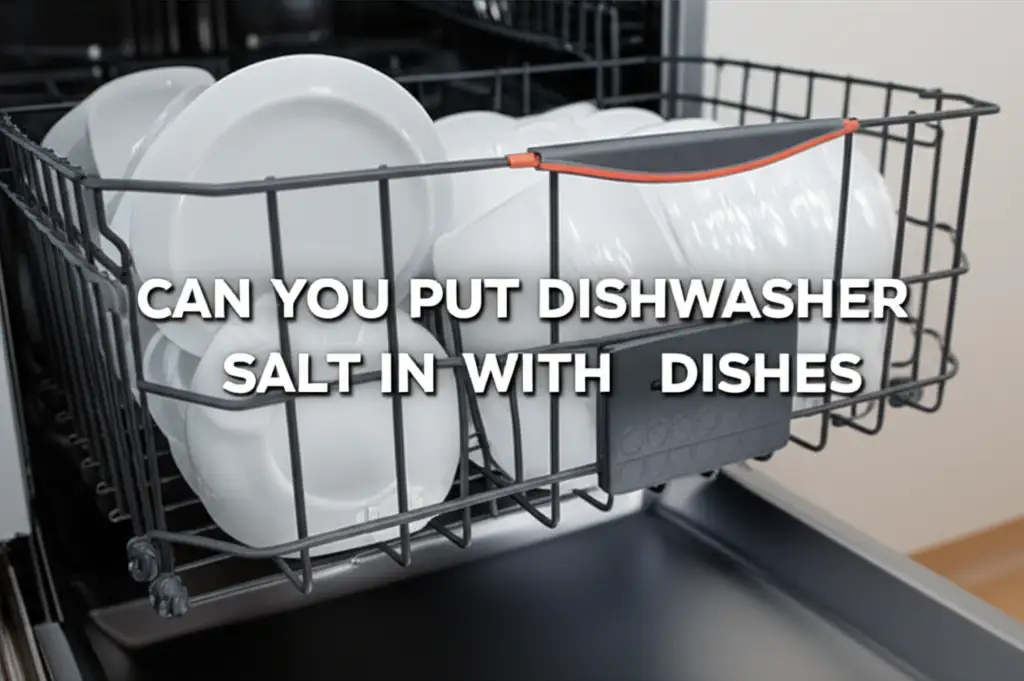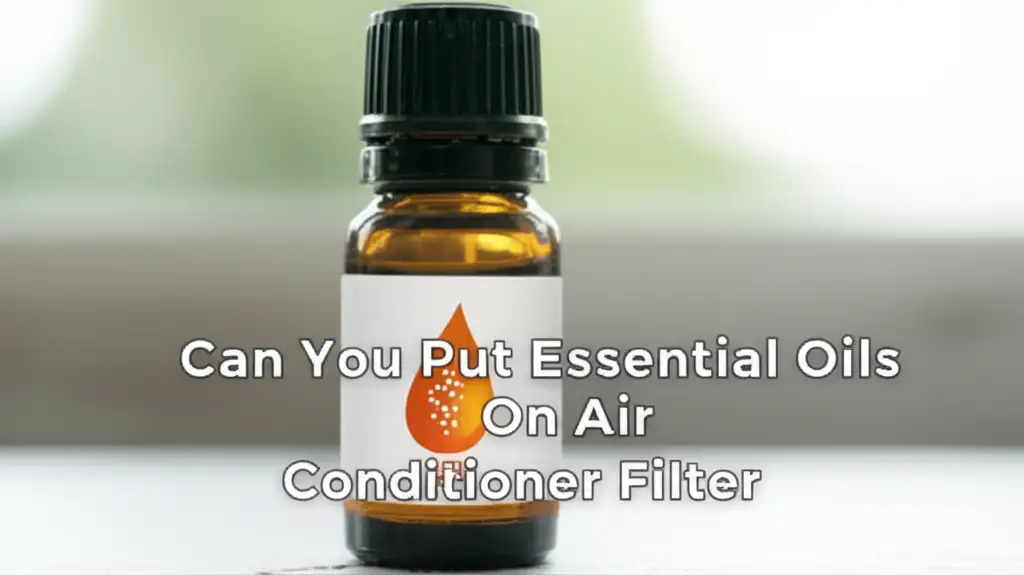· Todd Martin · Animal Care · 17 min read
How To Keep Chicken Water Clean

Keep Chicken Water Clean: A Vital Guide for Healthy Flocks
Keeping your chickens hydrated is essential for their health. Dirty water sources, however, can quickly turn into breeding grounds for bacteria and pathogens. I often think about how crucial clean drinking water is for all living things, especially for my backyard flock. Ensuring their water stays clean protects them from illness and supports strong egg production. This guide will walk you through practical strategies to maintain pristine water for your chickens, covering everything from waterer selection to advanced cleaning methods.
Takeaway
- Choose Appropriate Waterers: Select waterer types that minimize contamination, such as nipple or bell waterers, over open containers.
- Implement Daily Maintenance: Rinse and refill waterers daily, and perform quick spot cleans to remove visible debris.
- Conduct Weekly Deep Cleaning: Disassemble and scrub waterers weekly with a brush and appropriate cleaning solutions to remove biofilm and algae.
- Optimize Waterer Placement: Elevate waterers, place them in shaded areas, and position them away from roosts and high-traffic dirt areas.
- Consider Water Quality Enhancements: Explore options like water filters for improved water quality and beneficial additives.
To keep chicken water clean, regularly choose appropriate waterers that minimize contamination, clean them daily with a rinse and refill, and perform weekly deep scrubs. Proper placement, away from dirt and droppings, also greatly helps. These actions prevent disease and ensure your flock stays healthy and hydrated.
Understanding the Importance of Clean Water for Chickens
Clean water is not just a luxury for chickens; it is a fundamental need. Think about it: water makes up a significant portion of a chicken’s body weight. Chickens need constant access to fresh water to digest food, regulate body temperature, and produce eggs. Dirty water, however, does the opposite of good.
Bacteria, viruses, and parasites thrive in contaminated water. These tiny organisms can cause various health problems for your flock. Chickens may suffer from diarrhea, reduced appetite, or even death. Contaminated water can introduce illnesses that spread quickly through a flock.
Disease Prevention
Dirty water acts as a direct pathway for pathogens to enter your chickens’ systems. Illnesses like coccidiosis, salmonella, and fowl cholera often spread through contaminated drinking water. Preventing these diseases starts with a clean water supply. Regular waterer cleaning reduces the chances of disease transmission. It helps keep your chickens healthy and productive.
A strong immune system depends on proper hydration. Chickens consuming dirty water may become dehydrated, even if they drink. The body struggles to absorb water when it is full of impurities. This weakens their immune response, making them more vulnerable to infections. Clean water helps the immune system function at its best.
Optimal Hydration and Production
Proper hydration directly impacts egg production. Dehydrated hens lay fewer eggs, and the eggs they do lay may be smaller or have weaker shells. This is because water helps transport nutrients necessary for egg formation. Without enough clean water, egg quality and quantity suffer.
Meat chickens also need clean water for optimal growth. Water helps in nutrient absorption and waste elimination. Dirty water slows growth rates and makes chickens less efficient at converting feed into meat. Providing a clean, reliable water source helps ensure your flock reaches its full potential. I always notice my hens are more active and their eggs are more consistent when their water is spotless.
Choosing the Right Waterer to Minimize Contamination
Selecting the correct waterer type makes a significant difference in how clean the water stays. Different designs offer varying levels of protection against dirt, droppings, and algae. An open pan, for example, quickly collects litter and feces. Closed systems, by contrast, keep the water enclosed.
Consider the age and size of your flock when choosing a waterer. Small chicks need easy access to water without drowning risks. Adult chickens require more water capacity to last through the day. The right waterer reduces your daily cleaning burden. It also contributes to better flock health.
Nipple Waterers
Nipple waterers are very popular for keeping water clean. Chickens drink by pecking a small metal nipple, which releases water directly into their mouths. This design prevents chickens from stepping in their water or getting feed into it. The water supply remains enclosed and much cleaner.
I find nipple waterers reduce water waste and prevent spillage. They are ideal for various coop setups, from small backyard flocks to larger operations. While initial setup may take time, the cleanliness benefits are worth it. Remember to check for leaks and ensure all nipples work properly.
Bell Waterers
Bell waterers feature a reservoir that releases water into a shallow trough below. This type of waterer is gravity-fed and generally holds more water than nipple systems. Chickens drink from the open trough, but the design makes it harder for them to perch directly over it. This reduces fecal contamination.
Bell waterers are good for larger flocks. They provide easy access to water for many birds at once. While cleaner than open pans, they still require regular cleaning. Debris can enter the trough, and algae can grow in warm conditions. Positioning them correctly helps maintain cleanliness.
Open Trough Waterers
Open trough waterers, like large pans or buckets, are the simplest option. They are inexpensive and readily available. However, they are also the most prone to contamination. Chickens often kick dirt, litter, and feces into these waterers. Algae grows quickly in direct sunlight.
If you use an open trough, plan for very frequent cleaning. You might need to clean and refill it several times a day. While convenient, the constant contamination risk makes them less ideal for maintaining water purity. They work best as a supplementary water source or for very temporary use.
Daily Practices for Maintaining Chicken Water Quality
Consistency is key when it comes to keeping chicken water clean. Daily attention prevents minor issues from becoming major problems. Think of it as a quick clean-up that saves you a lot of effort later. These daily tasks take only a few minutes but make a huge difference in water hygiene.
Neglecting daily maintenance allows biofilm and algae to build up quickly. Biofilm is a slimy layer of bacteria that coats surfaces in water. It is difficult to remove once established. Daily cleaning stops this buildup before it starts. This ensures your chickens always have access to fresh water.
Daily Rinse and Refill
Every morning, make it a habit to empty the waterer completely. Rinse it out thoroughly with clean water. I often use a garden hose to quickly flush out any loose debris. Then, refill the waterer with fresh, cool water. This simple step removes most new contaminants.
Do not just top off the water. Stale water at the bottom can still harbor bacteria. Emptying and refilling ensures all water is fresh. This routine also allows you to quickly inspect the waterer for any cracks or issues. It is a quick check that adds much value.
Spot Cleaning
Throughout the day, especially if you have an open waterer, keep an eye on the water’s appearance. If you see visible debris, such as feed particles, feathers, or droppings, remove them immediately. A small scoop or a net can help with this. This is part of proactive water management.
For nipple or bell waterers, check for any clogs or blockages. Ensure water flows freely when a chicken pecks or pushes the bell. Sometimes, chickens can get mud on their beaks, transferring it to the waterer. Spot cleaning keeps the water appealing and safe for consumption.
Weekly Deep Cleaning Strategies for Chicken Waterers
While daily rinses are vital, a more thorough cleaning is necessary at least once a week. This deep clean tackles stubborn grime, biofilm, and algae that daily rinsing cannot remove. Skipping this step leads to a rapid decline in water quality. Regular deep cleaning protects your flock from many health problems.
I find setting a specific day each week for this task helps. It becomes part of the routine. Using the right tools and cleaners makes the job easier and more effective. This weekly effort ensures the water source is truly sanitized. It helps keep your chickens thriving.
Disassembly and Scrubbing
For a proper deep clean, disassemble your waterer as much as possible. Separate all removable parts, such as the base, reservoir, and nipples. Use a stiff-bristled brush or a bottle brush to scrub all surfaces. Pay close attention to crevices and hard-to-reach areas where grime accumulates.
Soak stubborn parts in a diluted bleach solution (one part bleach to 10 parts water) or a vinegar solution for 15-30 minutes. This helps loosen biofilm and kill bacteria. After soaking, scrub again and rinse all parts thoroughly with clean water multiple times. Ensure no cleaner residue remains before reassembling. You can find more tips on keeping water systems clean by looking at guides like how to clean a water tank or how to clean a water filter, as similar principles apply.
Using Natural Sanitizers
Many people prefer natural cleaning agents for their chicken supplies. White vinegar is an excellent choice. Its acetic acid helps break down mineral deposits and kills many types of bacteria and fungi. Mix equal parts white vinegar and water for cleaning. Let it sit for a while before scrubbing.
Another natural option is hydrogen peroxide. A 3% solution can disinfect waterers effectively. Rinse thoroughly after using any cleaning agent. Some people also use grapefruit seed extract (GSE), which has antimicrobial properties. Add a few drops to your cleaning water, or even directly to the chicken’s drinking water if you follow product instructions carefully.
Addressing Algae and Biofilm
Algae and biofilm are common problems, especially in clear or translucent waterers exposed to light. Algae appears as green slime. Biofilm feels slippery. Both can harbor harmful bacteria. To combat algae, scrub vigorously with a brush. Sunlight promotes algae growth, so consider shading the waterer.
For persistent biofilm, a stronger scrubbing action or a longer soak in vinegar or a mild bleach solution may be needed. Changing the waterer type to an opaque one can also help reduce algae. Some people add a very small amount of apple cider vinegar (ACV) to the water itself, which can deter algae growth due to its acidity, but too much can make the water unpalatable.
Placement and Environment: Keeping Water Clean from External Factors
The location of your chicken waterer impacts its cleanliness more than you might think. A poorly placed waterer can quickly become a muddy, contaminated mess. Strategic placement minimizes external factors that introduce dirt, debris, and pathogens into the water supply. This protects your flock from illness and reduces your cleaning effort.
Consider the immediate surroundings of the waterer. Is it near a dust bath area? Is it directly under a roosting bar? These factors contribute to contamination. Proper positioning creates a cleaner drinking environment for your chickens. I always make sure the water is away from the areas where chickens dig or sleep.
Elevation and Stability
Elevating the waterer off the ground is one of the best ways to keep it clean. Chickens scratch at the ground constantly, kicking up dirt, litter, and droppings. Placing the waterer on a stable stand, cinder blocks, or hanging it helps keep these contaminants out. The lip of the waterer should be at about the height of a chicken’s back.
This elevation also prevents chickens from easily perching on top of the waterer, which could lead to droppings in the water. Ensure the stand is stable and cannot be easily tipped over, especially by larger birds. A stable base prevents spillage and keeps the waterer upright.
Shade and Temperature Control
Direct sunlight promotes algae growth and can quickly heat the water. Warm water is less appealing to chickens and provides a better breeding ground for bacteria. Place the waterer in a shaded area of the coop or run. This could be under a roof, a tree, or a shade cloth.
Keeping the water cool helps maintain its freshness and palatability. Chickens drink more cool water, which is vital for their hydration, especially during hot weather. If natural shade is unavailable, create some using a simple cover or by positioning the waterer on the north side of a structure.
Preventing Fecal Contamination
Fecal contamination is a primary source of pathogens in chicken water. Chickens often roost or stand over open water sources. Position the waterer away from roosting bars, feeding stations, and high-traffic areas where droppings are common. This reduces the chance of direct fecal drops into the water.
Using waterer types like nipples or bell waterers, which offer less open surface area, also significantly reduces this risk. Regular removal of droppings from the coop and run floor helps reduce the overall pathogen load in the environment. A clean environment contributes to clean water.
Advanced Solutions for Persistent Water Contamination Issues
Sometimes, despite best efforts, water quality issues persist. This might be due to source water quality, climate challenges, or specific flock behaviors. When basic cleaning and placement are not enough, consider advanced solutions. These methods address deeper water problems and can significantly improve the health of your flock.
Advanced solutions might involve treating the water itself or adding beneficial substances. They are not always necessary for every flock. However, they provide extra layers of protection. I find these strategies particularly helpful if my chickens show signs of persistent digestive issues.
Water Filtration Systems
If your primary water source is well water, pond water, or has known impurities, a filtration system can be beneficial. Simple inline filters can remove sediment, chlorine, and some dissolved solids. More advanced systems can tackle specific contaminants, ensuring the water reaching your chickens is cleaner. Consider installing a simple filter on your water line, similar to how you might clean a water filter in your home or perhaps clean a water tank regularly to improve water quality at the source.
Even if you use municipal water, filters can remove chlorine and other chemicals that might affect water palatability. Remember that filters require regular maintenance, including cleaning or replacing cartridges. Neglecting filter maintenance can make the water quality worse, not better.
Probiotics and ACV
Adding beneficial supplements to chicken water can support gut health and potentially inhibit harmful bacteria growth. Probiotics, available in powdered form, introduce beneficial bacteria to the chicken’s digestive system. This can help chickens better resist pathogens found in water. Follow product instructions for dosage.
Apple cider vinegar (ACV), specifically raw, unfiltered ACV with “the mother,” is another popular additive. Many chicken keepers add a splash (e.g., 1 tablespoon per gallon) to their waterers. ACV is believed to support digestion, boost immunity, and may slightly acidify the water, which can deter some harmful bacteria and algae growth. It also helps break down mineral deposits, which can be useful if you’re dealing with hard water stains in your waterers.
Hard Water Management
Hard water contains high levels of minerals like calcium and magnesium. These minerals can leave chalky deposits inside waterers, hoses, and nipples. These deposits, called scale, provide rough surfaces where biofilm and algae can easily attach and grow. Scale can also clog nipples and lines.
Regular cleaning with an acidic solution, like white vinegar, helps dissolve these deposits. Soaking parts in vinegar for several hours or overnight is often effective. If hard water is a severe problem, consider a water softener for your well water, or use collected rainwater. Managing hard water is crucial for maintaining the efficiency and cleanliness of your watering system. For large containers, principles for cleaning like those for 5-gallon water bottles can apply.
Troubleshooting Common Chicken Water Challenges
Even with diligent care, you might encounter specific challenges in keeping your chicken water clean. Weather, flock size, and coop conditions can all present unique issues. Knowing how to address these common problems helps you maintain a consistent supply of clean water. Being proactive saves you time and stress.
These troubleshooting tips offer practical solutions for specific scenarios. They go beyond general cleaning advice. They help you tackle persistent problems. I have certainly faced many of these issues over the years, and finding specific solutions made a big difference.
Preventing Mud and Debris
Mud and debris are major culprits for dirty water, especially in outdoor runs. Chickens love to scratch and dust bathe, easily kicking dirt into open waterers. To combat this, elevate waterers as discussed earlier. Place paving stones or a gravel pad around the waterer to reduce mud accumulation.
If using an open container, consider placing a wire mesh or grate over the top. This allows chickens to drink but prevents them from stepping into the water or kicking in large pieces of debris. Regularly rake and clean the area around the waterer.
Combating Mold and Slime
Mold and slime, often green, black, or pink, indicate persistent moisture and organic matter. This is usually biofilm and algae. If regular scrubbing is not enough, increase the frequency of deep cleaning. Ensure the waterer dries completely between uses, if possible, to inhibit growth.
For persistent mold, a stronger sanitizing solution might be needed. Use a diluted bleach solution (1:10 bleach to water) or a commercial poultry waterer cleaner. Always rinse thoroughly to remove all chemical residues. Reducing light exposure to waterers also slows algae and mold growth significantly.
Winter Water Solutions
Keeping water clean in winter presents the challenge of freezing. Frozen water means no water, which is life-threatening. Heated waterers or submersible heaters are excellent solutions. These devices keep the water above freezing, ensuring continuous access for your flock. For large water containers, similar methods used to keep camper water tanks from freezing or developing sediment can be adapted.
Even with heaters, waterers still get dirty. Chickens tracking mud and snow can contaminate the water. Continue your daily rinsing and weekly deep cleaning routines, even in cold weather. Be especially mindful of condensation and ice buildup inside and outside the waterer. I use a heated dog bowl for my flock in winter, which works wonders.
Frequently Asked Questions
How often should I clean chicken waterers?
You should rinse and refill chicken waterers daily to remove fresh debris and provide new water. A thorough deep cleaning, involving scrubbing with soap or a sanitizing solution, is necessary at least once a week. This weekly clean removes biofilm, algae, and mineral deposits, preventing bacterial buildup and maintaining water quality for your flock.
What can I use to clean chicken waterers naturally?
White vinegar is an excellent natural cleaner for chicken waterers. Mix it with equal parts water, let it soak, then scrub and rinse thoroughly. Hydrogen peroxide (3%) can also disinfect without harsh chemicals. Always rinse multiple times to ensure no residue remains. These options are safe and effective for regular use.
Why does my chicken water get dirty so fast?
Chicken water gets dirty quickly due to chickens kicking in dirt, feed, and droppings, especially with open waterers. Lack of elevation, placement near dust bath areas or roosts, and warm temperatures promoting algae growth also contribute. Using a waterer type that limits contamination, like nipple or bell waterers, and elevating them can help significantly.
Can dirty water make chickens sick?
Yes, dirty water can definitely make chickens sick. Contaminated water is a primary source for spreading harmful bacteria, viruses, and parasites, such as E. coli, Salmonella, and coccidia. Chickens drinking dirty water can suffer from digestive issues, dehydration, reduced egg production, and severe illnesses that can lead to death.
Are nipple waterers truly cleaner?
Yes, nipple waterers are generally much cleaner than open waterers. Their enclosed design prevents chickens from kicking in dirt, feed, or droppings. Water is only released when a chicken pecks the nipple, minimizing external contamination and reducing algae growth. This significantly lowers the risk of waterborne diseases and requires less frequent deep cleaning.
Conclusion
Ensuring your chickens have access to clean, fresh water is one of the most important aspects of backyard flock management. Dirty water poses serious health risks, impacting everything from egg production to overall vitality. By consistently implementing the strategies discussed—from selecting the right waterer to daily rinses, weekly deep cleans, smart placement, and even advanced solutions—you provide your birds with the best possible hydration.
A healthy flock starts with clean water. I have seen firsthand the difference it makes in the energy levels and productivity of my own chickens. Make a commitment to water hygiene, and you will enjoy a thriving, happy flock. Start today by assessing your current water system and implementing these practical steps. Your chickens will thank you with their health and happiness.





